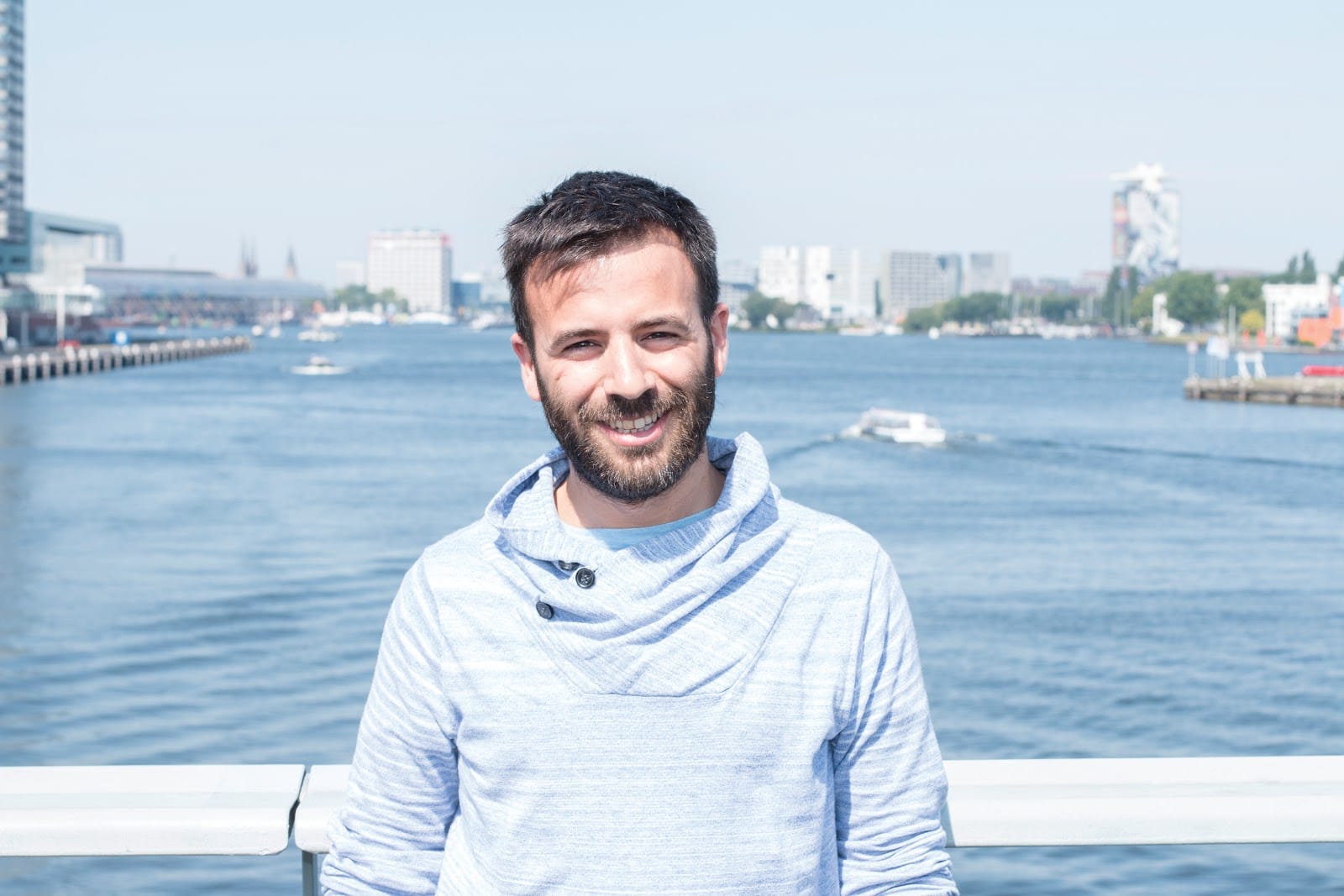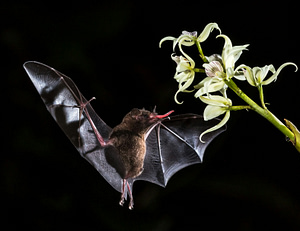Over 1.5 billion mobile phones are sold every year, according to tech research company Gartner, making e-waste in mobile phones a growing problem. Since only 20% of electronic products are formally recycled, mobile phones represent a key leverage point in addressing this critical issue. So what can be done?
In September, we looked at what headphones startup Gerrard Street is doing to tackle e-waste. But there are other Dutch pioneers in this space, including Amsterdam-based Fairphone, who have just launched a new smartphone model. They’re working to not just reduce e-waste in mobile phones, but also ensure supply chains look after the people who work in them – which we agree is key to a truly circular economy. We spoke with co-founder and circular innovation lead Miquel Ballester Salvà about what this company is doing to address the environmental and social impact of mobile phones.

Metabolic: To start, how did you first become involved in Fairphone?
Miquel Ballester Salvà: I came from a background in industrial design. I was undertaking a Masters at the Delft University of Technology on strategic product design, focusing on technologies for sustainable development. Then I met Bas van Abel, who was working at Waag Society as a creative director at the time. I was intellectually amazed just from talking with him for half an hour. Fairphone was a side project, involving urban mining workshops which got people to dismantle their phones to learn about mining and recycling. So from around 2012, we decided to try and move into the industry – you can raise awareness all you want, but we needed to give an alternative.
We wanted to make a product that makes sense from a sustainability perspective; not doing less bad but more good. We looked at how it can be regenerative. It can’t just be sustainable; need to change the system a little as well. We set the mission of company as a social enterprise, but playing by the same rules as other companies in terms of a commercial model, facing the same challenges. We wanted the value to be not just to customers but to the whole industry, to show others what’s possible and inspire change in how the industry works.
We were confident and naive, but you need a bit of naivety to start something like this.
M: So how did that naivety play out in practice? What surprised you about the process of making the first Fairphone?
MB: What surprised me was the complexity – we knew it would be complex, but when you really get into the ins and outs of putting consumer electronics into market, there were a lot of learnings. We started hiring more people with specialized knowledge and that helped a lot. After an incubation program with Bethnal Green Ventures in London, we secured some funding to get going. From the first week of 2013, we were a team of 4 people. Now we are 75.
First we only focused on the supply chain. We selected a design that was already finished, a licenced design: it was only for Fairphones 2 & 3 that we designed our own with more modularity.
M: What supply chain improvements did you make out of the first Fairphone to address the impacts of mobile phones?
MB: For Fairphone 1, we integrated tin and tantalum from sources in the D.R. Congo outside of conflict zones. If you look at the electronics industry’s need for virgin metals, the industry is not catching up with recycling. We want a circular economy but we’re not there yet. So there is also progress to be made with some of our other key pillars of our work to do with working conditions.
You have particular issues in mining, especially with people working for themselves in places like the Congo, highly unprotected, and victims of conflicts. So we worked with initiatives to source conflict-free tin that we used in soldering pegs, tracked through the whole supply chain to make sure that tin ended up in our product, to show that ‘hey, this is possible, hey other companies, you can also buy from this initiative.’ We did the same with tantalum, used in capacitors. Same story — we were able to trace it all the way to the mine.

M: Moving on to Fairphone 2, what were you able to improve now that you were designing it yourself?
MB: Fairphone 2 was designed from the inside out, it had to be a modular design so it could be repaired extremely easily. We saw then and we see it still that with regular smartphones, they are becoming more and more integrated, and so they are less and less easy to repair. A lot of the phones that people stop using have faults that are actually pretty easy to fix. Batteries are a good example: even a phone with an integrated battery is not very difficult to change, but the means aren’t there so people buy a new phone.
Fairphone 2 had a display you can change by hand, modules that could be easily unscrewed. We also have plans for the future to isolate in modules the functions that don’t change so rapidly, so that they can be reused in consecutive models. This would mean you can keep most of your modules and only change the core, if you want to upgrade to a new model. It isn’t possible yet but it is in our roadmap.
Design is only one of our four pillars of impacts – which also include working conditions, origin materials, and recycling. These are the four big areas we see potential for change.

M: So, you’ve recently released the Fairphone 3: what are the big advances this time?
MB: For Fairphone 3 we’ve worked further on responsible sourcing of a list of 8 focus materials; cobalt, tin, rare earths among other. We have a lot of different projects going, for example some focus on avoiding child labor in Uganda, other projects focus on health and safety in DR Congo. We did several things on worker conditions, worker satisfaction, with Fairphone 3 in that area. We’re super proud to be launching, with our manufacturer, a living wage project. Manufacturing in China means low wages that may not be illegal, but even the minimum wage is still very low.
It’s been a long process to do something with wages, we don’t want it to be just workers when they work on Fairphones, we want it to be the other workers working over there too. So we at Fairphone are working to bridge the gap between minimum and living wage. The main reason is to make work towards people earning enough to make a proper living, so for example so that they can actually save money rather than just pay for rent and food. It’s sparking an interesting conversation across the industry.
For the Fairphone 3 we also evolved and improved our modular design: we’ve broken one of the modules from the previous phone down into two. It’s a more compact phone, more in line with what people expect from a smartphone today. We changed some of the technical side: the phone is now more robust, and just as repairable.

M: You mentioned earlier that you want not just to make a sustainable phone yourselves, but to influence the entire industry. You’ve provided some examples of that already: any others?
MB: What we have to ask ourselves is: where is our circle of influence? We know a lot of our work is used in board rooms as an example, triggering conversations that were difficult for sustainability managers to bring up previously. But in terms of specific examples, it is difficult to say any one thing another company did was because we did something. In general trends we see a little of everything, A Greenpeace report on greener electronics put us on top, Apple second, then a long tail of other manufacturers. It is changing slowly, but we need to develop that perception that companies should do less bad instead of more good.
Another example we want to set is in recycling. We have a recycling program, of course, most resellers have that but not so much direct manufacturers. We offer a free recycling program, we incentivise a little, give customers 20 or 40 euros depending on the model, and moving forward we are looking to other valuation systems for phones to come back to us. Some are refurbished, some are recycled. We have projects in Ghana, Cameroon with partners where we are collecting phones not completely damaged, and working with Closing the Loop and Recell in Ghana, trying to set up a continued shipment of smartphones out of those countries over to Belgium, to a recycling plant. It is not the ultimate solution, we don’t want to ship e-waste around the world, but we can use these projects to bring attention, and have some knowledge transfer.
M: You haven’t mentioned carbon emissions. Is that part of Fairphone’s thinking?
MB: We focus on emissions reduction through the work we do on sustainable design, in particular modularity. When we do a Life Cycle Assessment (LCA), we always publish the full methodology with all numbers. We showed with our LCA of Fairphone 2, in a comparison of two scenarios, a regular 3-year life of a phone, versus a 5-year life where we are heading to with repairs, in the worst case scenario you save 30% of CO2 emissions, which is very conservative. It is probably much more. We wanted to show focusing on longevity is so important.

M: What’s next for phone e-waste and Fairphone?
MB: We’re working on the business model. We have not yet launched Fairphone as a service, but we’ve researched it a lot and are trying to implement it. We see it as an opportunity to be more in control of the phones and extend their lives. We expect to implement this for Fairphone 3.
With Fairphone 2 we’ve had close to five years of software support, we are confident we will get more than five years. There are a lot of challenges with Android dropping support, these sorts of things. From a design perspective, we’re really focusing on longevity. And going forward we want to focus on upscaling production.
To find out more, visit the Fairphone website.
For more on circular economy solutions for phone e-waste, read about our framework for tracking materials and impacts through an electronic product’s supply chain.






